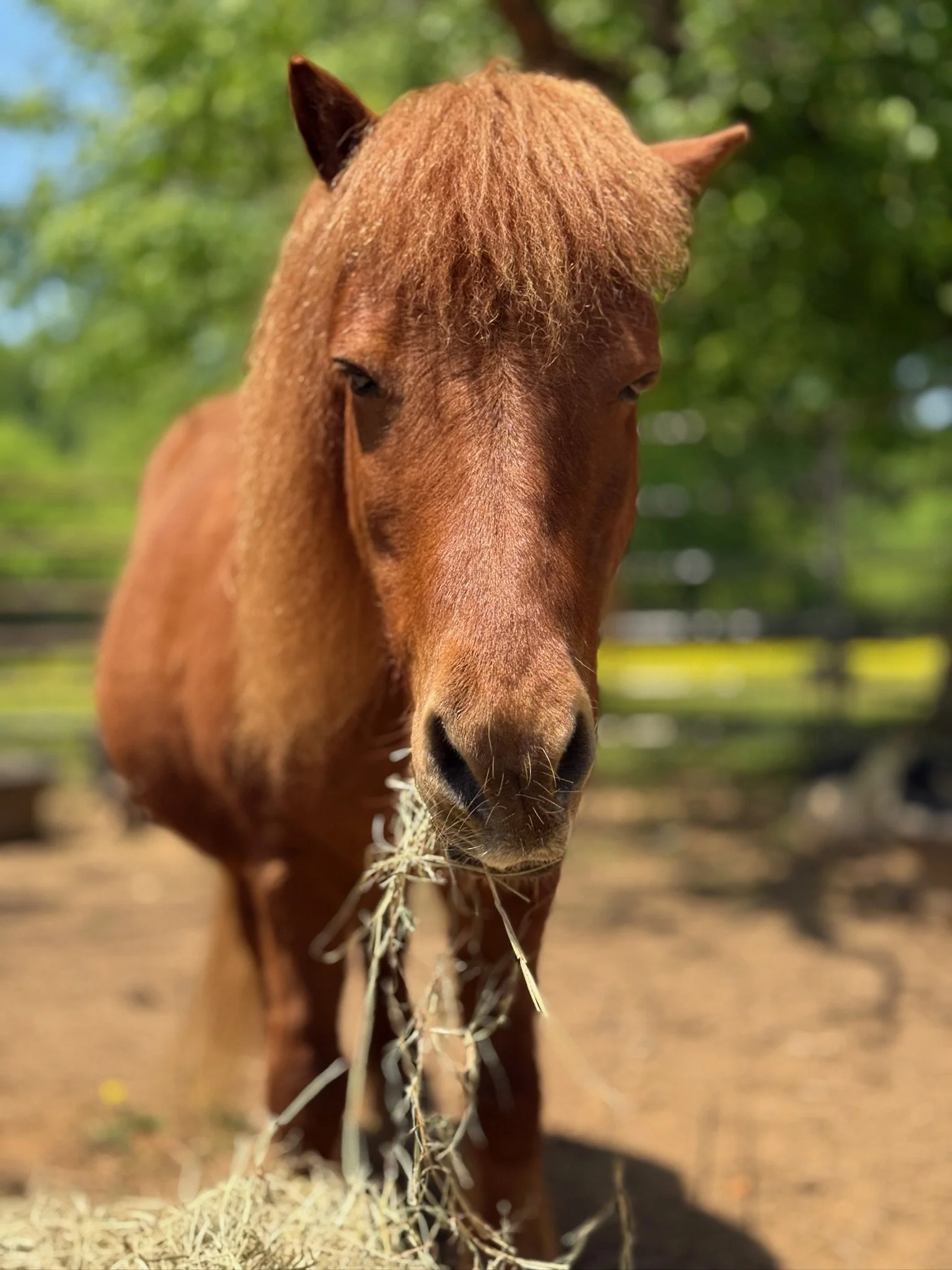Miniature Horse
Scientific Name: Equus Ferus Caballus
Habitat: Open pastures, with plenty of room to roam and graze.
Diet: Herbivore
Weight: 70-350 lbs.
Conservation Status: Domesticated
Range: Many countries, including the United States, Australia, Argentina, and in Europe
Lifespan: 27-40 Years
Size: 24”-36” at the withers (shoulders)
Horses have hair that comes in a variety of types: wavy, straight, short, or long, and a variety of colors: brown, white, black, grey, spotted, or striped. Their hair covers their entire body, even their nose. Horses have hooves like goats, longer tails that reach the ground, small pointy ears, and large teeth that help them chew food whole, like apples and carrots. Horses also have circular-shaped eyes that range in color from brown to black.
Horses are known to be very intelligent, with great instincts, memory, and judgment that make them hyper-aware, but also very nervous creatures. Additionally, horses have a great sense of direction, allowing them to find their way home after prolonged absences or during the night.
Horses gain unique characteristics between 16 - 18 months and achieve sexual maturity between 3 and 5 years old. The Female Gestation period is 11 months long, and each litter consists of 1 to 3 foals. The foal is weaned after 6 months.
Horses are trained for a variety of purposes: racing, dancing, rodeos, agriculture, transportation, and even therapy. Due to their small size, only small children can ride a miniature horse, which makes them best suited to pulling carts and being therapy animals. Some miniature horses have even been certified as emotional support animals! The multifaceted use of horses makes them such important and amazing animals to have in our lives!


